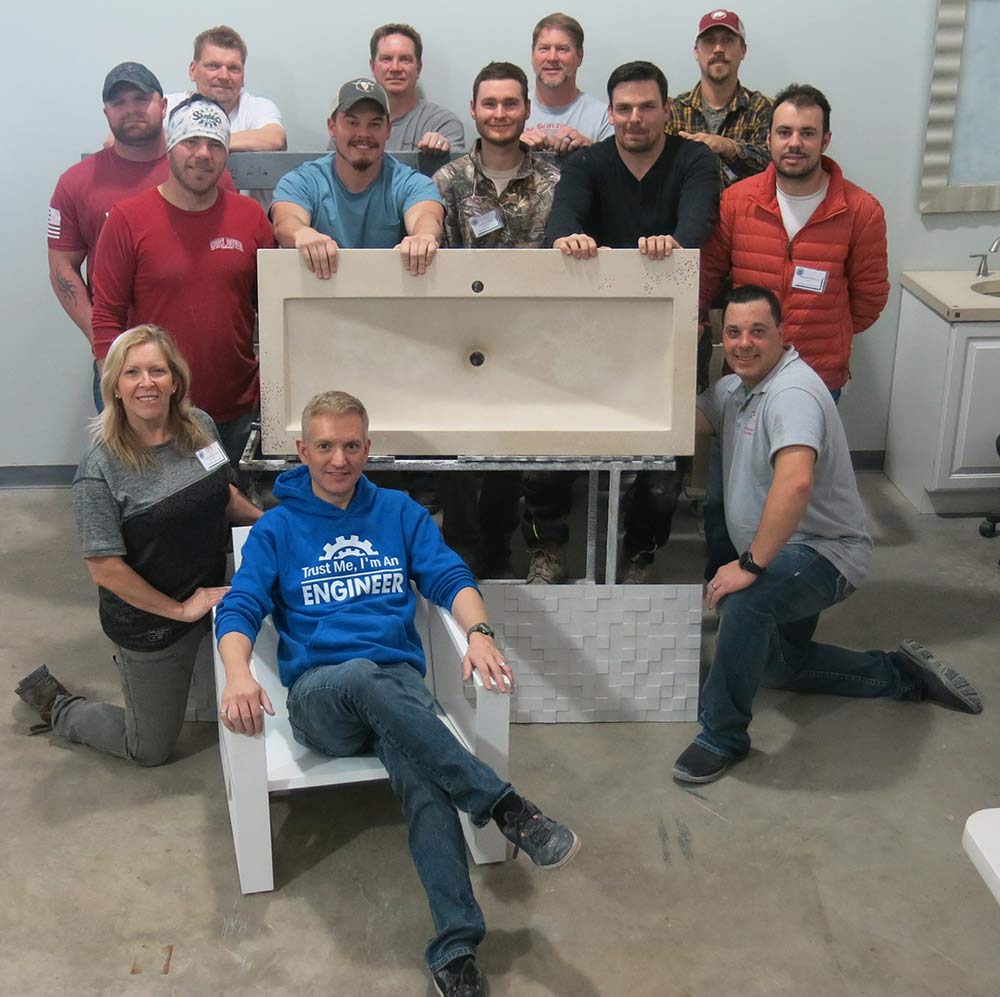I recently posted an article about what it means to be an engineer. I am an engineer not because I have an advanced degree, but because I was born that way. I can’t help it.
Being an engineer means that I’m meticulous, logical, skeptical, and conservative (building a margin of safety into everything). Engineers are very practical, and their advice won’t get you in trouble. Their advice will ensure that the bridge doesn’t fall down when you drive across it.
Like Vulcans, engineers will tell you the truth, whether you want to hear it or not. Here is the truth that prompted this article:
Customers don’t care about your mix, they care about what you do with it.
They care that you can do that 11′ long, 5″ thick, wrap-around fireplace hearth in a single piece, but you can do that with a GFRC mix design that’s been used for decades: sand, cement, pozzolan, polymer, perhaps some basic admixtures like defoamer, shrinkage reducer and superplasticizer, and multiple thin layers of backer compaction rolled. A vast majority of customers don’t want anything that is going to push any boundaries that good old regular GFRC can’t do. In fact, there’s quite a lot that good old regular precast can do, using either a fluid aggregate-based mix or a stiff all-sand mix.
The world doesn’t need yet another magic powder or ultra high performance mix. Yes, the dry polymer blends work just fine, and there is a valid business reason for them because of the freezing issue with liquid polymer. But no polymer and a 7 day wet cure works just fine too (which I don’t advocate – 7 days is too long, and would affect your customers). Click here for an article about a study I did on dry and liquid polymers.
There are lots of good pre-blended mixes out there, with a wide variety of styles – all-sand, GFRC, highly fluid, etc. Pre-blended mixes can make business sense because they’re consistent, allow you to source fewer ingredients, save time, and reduce measuring errors. But they’re not miracle workers that allow you to abandon basic good concreting practices.
New materials are not a replacement for knowledge and experience. No admixture or mix is going to make you successful. What’s going to make you successful is:
- meticulousness
- attention to detail
- thinking before you act
- preventing mistakes
- project management systems
- focusing on marketing and sales
- delivering consistent quality on time
- (here’s the unpopular part) adhering to decades-long, proven, good concreting practices and not jumping to the latest trendy admix because all your Facebook friends are doing it.
What’s next, we’re all going to just squirt as much water as we want into our mixes because a manufacturer says that his magic powder makes it possible?
That’s the biggest problem in this industry today: too many “magic ingredients” out there distracting people from what they really need to be doing, which is focus on their businesses.
This is not what anybody wants to hear, but there’s nothing else I can say because this is the cold, hard, boring truth… from an engineer.

